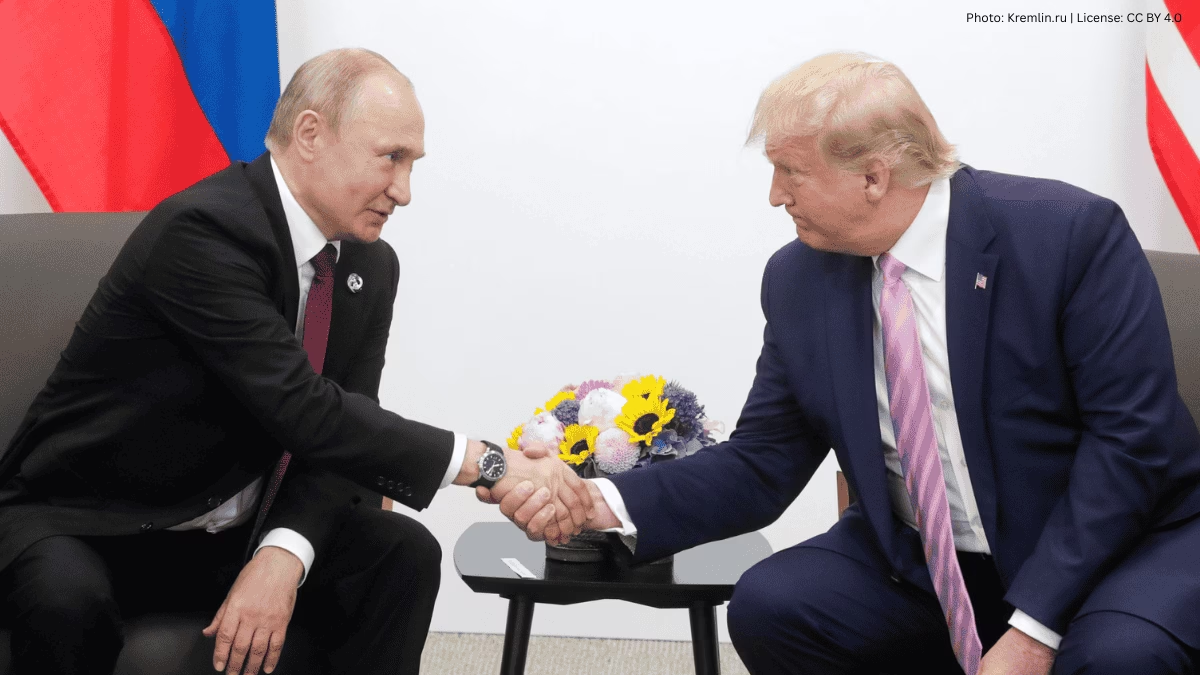The Trump Putin Summit 2025, held on August 15 at Joint Base Elmendorf-Richardson in Anchorage, Alaska, marked a major diplomatic event in the ongoing global effort to address the Russia-Ukraine conflict and broader geopolitical tensions between the U.S. and Russia. This detailed blog explores the summit’s important discussions, key quotes from both leaders, the atmosphere of the meeting, and its potential implications for world affairs.
Trump Putin Summit 2025: Setting the Stage for Historic Talks
President Donald Trump arrived in Alaska with a blend of confidence and cautious optimism. Before the summit, Trump said, “Putin won’t mess around with me,” asserting a firm stance to negotiate effectively. He expressed his belief that Putin was genuinely inclined to find a peace agreement to end the war in Ukraine, stating, “I think President Putin would like to see a deal… but I am President, he is not going to mess around with me.”
The summit’s structure included a private one-on-one meeting, a bilateral lunch with delegations, and a press conference. Trump emphasized that this initial dialogue was preparatory, aiming to set the groundwork for a follow-up meeting involving Ukrainian President Volodymyr Zelenskyy and possibly European leaders. “This second meeting will be crucial. This initial meeting lays the groundwork like a chess game,” Trump noted.
Core Discussions: Ukraine, Ceasefire, Nuclear Arms, and Economic Cooperation
Central to the summit was the effort to negotiate an end to the conflict in Ukraine. Russia currently occupies about 20% of Ukraine’s territory following its invasion in 2022, and discussions revolved around potential ceasefire terms and territorial arrangements. Trump hinted at some flexibility regarding land control, suggesting the possibility of “land swapping” while aiming to recover some Ukrainian territory.
Putin proposed expanding the talks beyond Ukraine’s borders to cover nuclear arms control, describing the goal as creating “long-lasting conditions for peace between our nations, Europe, and globally.” This reflected a broader security dialogue, with Russia showing willingness to discuss an extension or renewal of agreements on strategic arms limitations, as existing treaties approach expiration.
Economic relations also featured in talks. Putin praised what he called the U.S. administration’s “energetic and sincere efforts to stop the fighting” and expressed hope for exploring “significant untapped potential” in Russia-U.S. economic cooperation, potentially linked to sanctions relief and trade developments.
ALSO READ : Donald Trump Intel Investment: Power Play That Could Redefine America’s Chip Future
Diplomatic Atmosphere and Symbolism
The choice of Alaska for the summit was highly symbolic. Sitting across the Bering Strait, Alaska was once Russian territory before being sold to the U.S. in the 19th century. Hosting the summit at a secure military base reflected Cold War-era caution, balancing safety and diplomacy.
Security was intense, with matched protection for both leaders, interpreters facilitating communication, and parallel delegation arrangements to ensure parity. The setting underscored the seriousness of the talks amid deep historical tensions and ongoing conflict.
Famous Quotes Defining the Summit’s Tone
- Donald Trump:
- “If this meeting goes well, I will call Zelenskyy and set up something that works for everybody.”
- “It’s a war that should never have happened… if I weren’t President, Putin would take over all of Ukraine.”
- “Putin won’t mess around with me.”
- Vladimir Putin:
- Praised U.S. “energetic and sincere efforts to stop the fighting.”
- Emphasized the aim to “create long-lasting conditions for peace… including agreements on the control of strategic offensive arms.”
Reactions and Challenges Ahead
While the summit generated cautious optimism, skepticism prevailed among many, especially Ukrainian officials who have consistently rejected any arrangement that would legitimize Russian territorial control. NATO partners and European leaders expressed concerns about the potential for deals that might reward aggression or undermine Ukraine’s sovereignty.
Analysts warned that negotiations would require careful balancing, and any premature agreements could fracture Western alliances. Trump’s direct engagement with Putin evoked mixed reactions globally — seen by supporters as a potential breakthrough, while critics feared concessions detrimental to regional stability.
Conclusion: A Diplomatic Pivot Point
The Trump Putin Summit 2025 stands as a significant diplomatic moment amid one of the most enduring conflicts of the decade. By addressing Ukraine, nuclear arms control, and economic relations, the summit laid foundational groundwork for a complex peace process with far-reaching implications.
As Trump and Putin positioned themselves as key negotiators, the world watches closely, recognizing that years of geopolitical tension and competing interests make any lasting resolution a steep challenge. The outcome of this meeting will shape the future of U.S.-Russia relations, European security, and global diplomacy in the years ahead.

